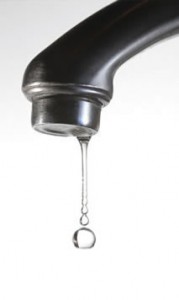 Water storage and building design
Water storage and building design
Climate change continues to be one of the most talked about issues across the property and development industry.
One of the most important elements in the climate change debate is water. Throughout Australia, different locations experience different rates of rain fall. This can translate into considerations for building design, particularly in regards to potential ways to store water.
If you could store water, a building with a roof area of 1,000 square metres in Sydney or Brisbane could collect 1,200,000 litres of water on average per year, which is equivalent to the volumetric space of approximately 46 basement car spaces.
However, same building in Melbourne would only capture 600,000 litres, while the same building in Tully, Far North Queensland would collect 4,500,000 litres of water per annum.
Also, a 600 square metre house block in Sydney or Brisbane could collect 720,000 litres of water per annum. This is interesting as a very high average house usage of 900 litres per day would only use 328,500 per annum.
With water restrictions tightening across the eastern coast of Australia, the issue of sustainability remains at the industry forefront. Napier & Blakeley is fully qualified and experienced in the areas of green accreditation and sustainability, and can provide assistance, oversight and coordination of the asset greening process.
With a staff of over 140 across the Eastern States of Australia, Napier & Blakeley currently has in excess of $20 billion either under management or analysis.
 What is the condition of your Schedule of Condition?
What is the condition of your Schedule of Condition?
With the recent downturn in commercial property activity now is not a time to lose sight of good property management, especially in relation to the Schedule of Condition in the terms of your lease.
A crucial component of a good leasing strategy understands the importance and purpose of a Schedule of Condition. All too often Make Good negotiations are made more complicated and protracted, not to mention more expensive, because there is no record of the condition of the premises at lease commencement.
Whilst the general purpose of a Schedule of Condition is acknowledged in the market place, their value as an effective tool in preventing disputes and removing ambiguity during the negotiation process is less understood and appreciated.
The level of protection a Schedule of Condition provides depends on a number of factors, namely the accuracy and detail of the schedule, the length of the lease and the lease obligations. At worst a poorly prepared Schedule will offer little or no protection to the tenant if it fails to properly record the property’s condition in the context of the lease obligations, is too ambiguous or, simply, is improperly or poorly referenced to the lease.
Recently N&B were instructed by a tenant of a large dilapidated warehouse after they were served with a Final Schedule of Make Good totalling more than $1,000,000.
The lease term was for 5 years and did not have the protection of a Schedule of Condition. Constructed in the early 1970’s, poorly maintained for longer than the preceding 5 years, the yield up clause in the lease required the tenant to deliver the property to the landlord in the condition which the lease stated as being “Good”, which would certainly have not been the case.
Fortunately for our client, we were able to reduce the claim to circa $200,000. If a Schedule of Condition was prepared at lease commencement, however, the agreed settlement would have been negligible.


